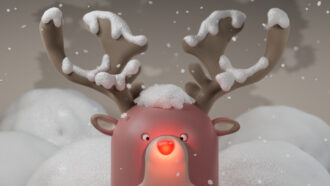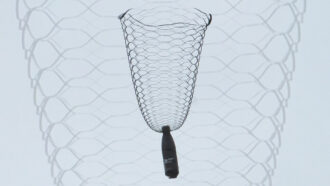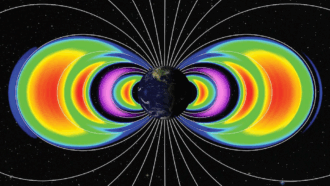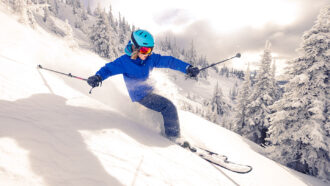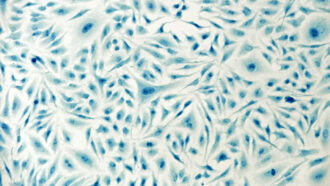Thinner air, less splatter
At low air pressure, a liquid drop that hits a surface makes no splash.
Share this:
- Share via email (Opens in new window) Email
- Click to share on Facebook (Opens in new window) Facebook
- Click to share on X (Opens in new window) X
- Click to share on Pinterest (Opens in new window) Pinterest
- Click to share on Reddit (Opens in new window) Reddit
- Share to Google Classroom (Opens in new window) Google Classroom
- Click to print (Opens in new window) Print
By Emily Sohn
If you could slow down time, you’d be amazed at the things you could see. In slow motion, for example, you could watch individual drops of rain landing in puddles and making mini-splats.
Scientists have been able to observe this process by using cameras that take thousands of pictures every second. Such photos give them the ability to see what our eyes are too slow to catch. Pictures of splashing milk droplets, in particular, have been popular ever since the 1930s, when technology made it possible to capture them. You can see some examples at web.mit.edu/Edgerton/www/HighSpeed.html (Massachusetts Institute of Technology).
 |
|
In air at normal pressure, a drop of alcohol spatters into a delicate and elaborate crown upon striking a glass slide.
|
| Lei Xu, University of Chicago |
A new experiment adds another twist to these frozen moments in time. Changing the air pressure around a droplet affects the kind of splash it makes.
For the study, researchers from the University of Chicago used a sealed chamber that let them change the air pressure inside. At different air pressures, they allowed alcohol drops to fall onto glass slides. They filmed each trial at 47,000 video frames per second.
Their results showed that drops hit with smaller splats or no splashing at all when the air pressure was lower than normal. When the scientists increased the air pressure, drops splattered more readily. The researchers also discovered that filling the chamber with lighter gases, such as helium, led to smaller splats compared to ones in the presence of heavier gases.
 |
|
At low air pressure, a drop hitting a surface makes no splash.
|
| Lei Xu, University of Chicago |
To explain their results, the scientists suggest that, as a drop flattens when it comes in contact with a surface, it spreads out along its edges and pushes against a thin layer of the surrounding gas. The gas resists being trapped, which forces the film’s edge upward. This interaction creates the splash.
When air pressure is low or the gas is light, the gas can’t resist as strongly, and the splat is weaker or never forms in the first place.
The scientists were surprised by their discovery. “I don’t think anyone ever thought poor little old air could do anything to the splash,” says physicist Sidney R. Nagel, who led the Chicago team.
Engineers are interested in the work, too. In industry and at home, splashing affects the quality of important processes, including ink-jet printing, engine combustion, and product washing. Finding ways to control the size of a splat could make such jobs a lot more efficient.
Going Deeper:
Weiss, Peter. 2005. Dial-a-splash: Thin air quells liquid splatter. Science News 167(Feb. 12):99-100. Available at http://www.sciencenews.org/articles/20050212/fob2.asp .
To see high-speed photographs of splashing drops, go to www.rit.edu/~andpph/exhibit-splashes.html (Andrew Davidhazy, Rochester Institute of Technology), courses.ncssm.edu/hsi/splashes/intro.htm (North Carolina School of Science and Mathematics), and web.mit.edu/Edgerton/www/HighSpeed.html (Massachusetts Institute of Technology).
